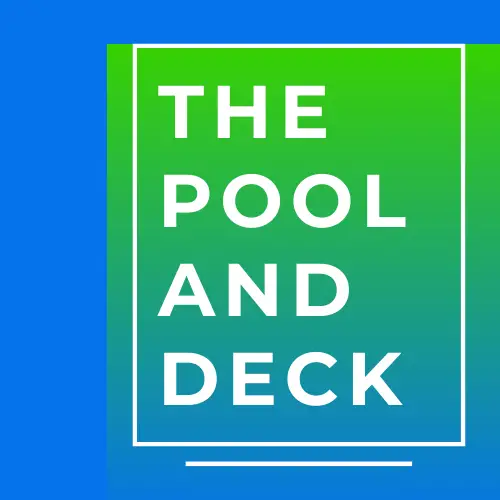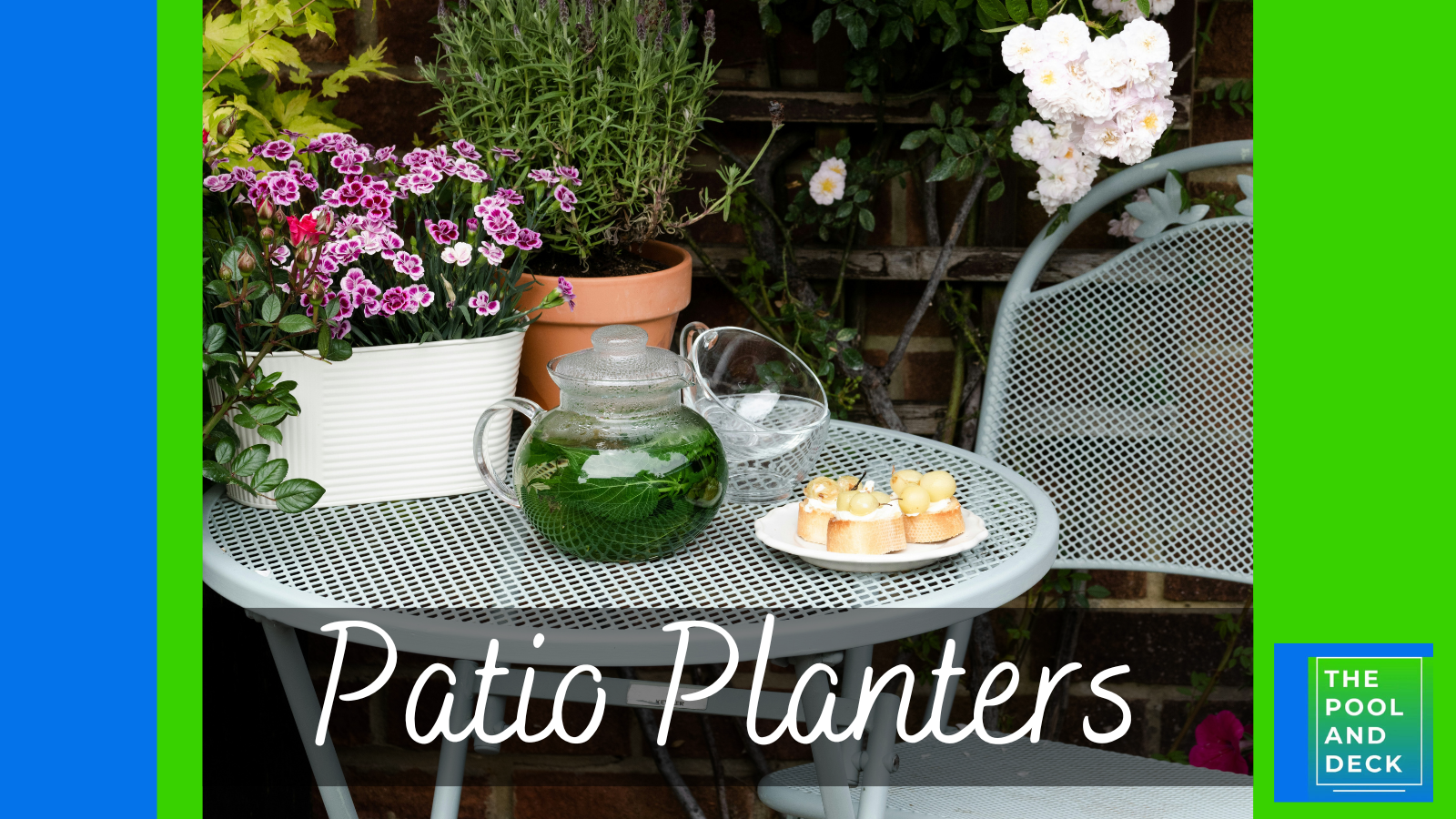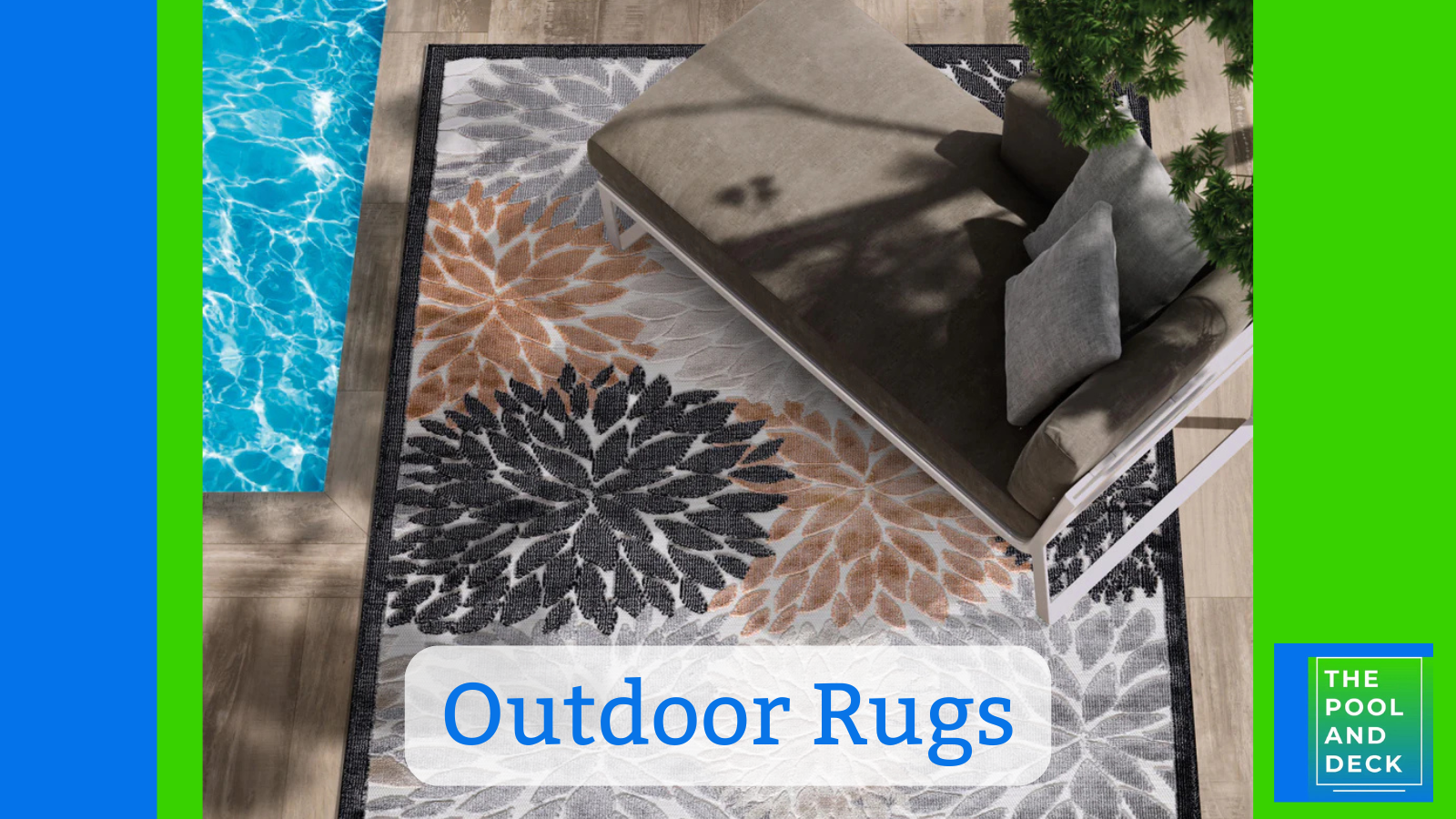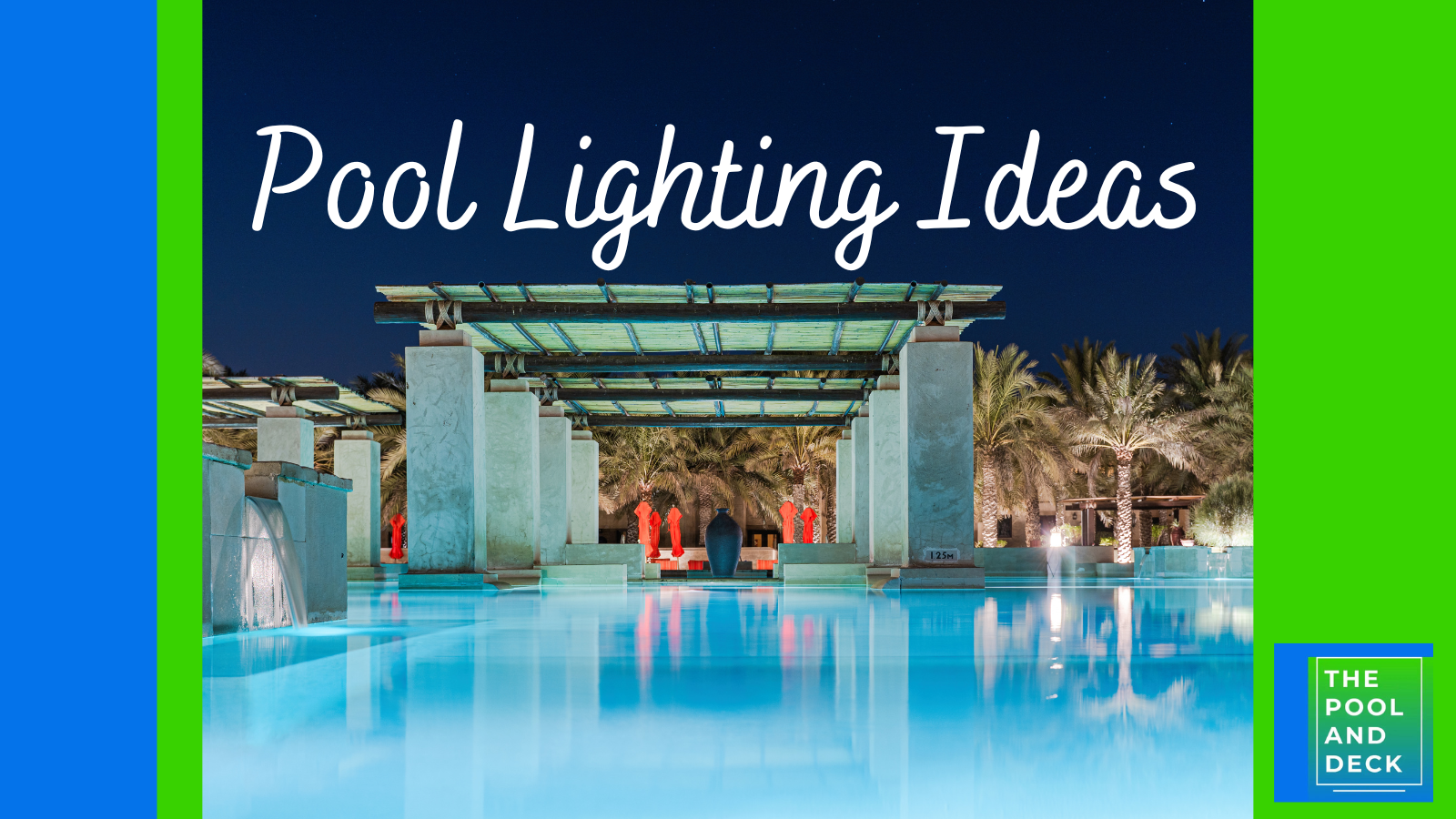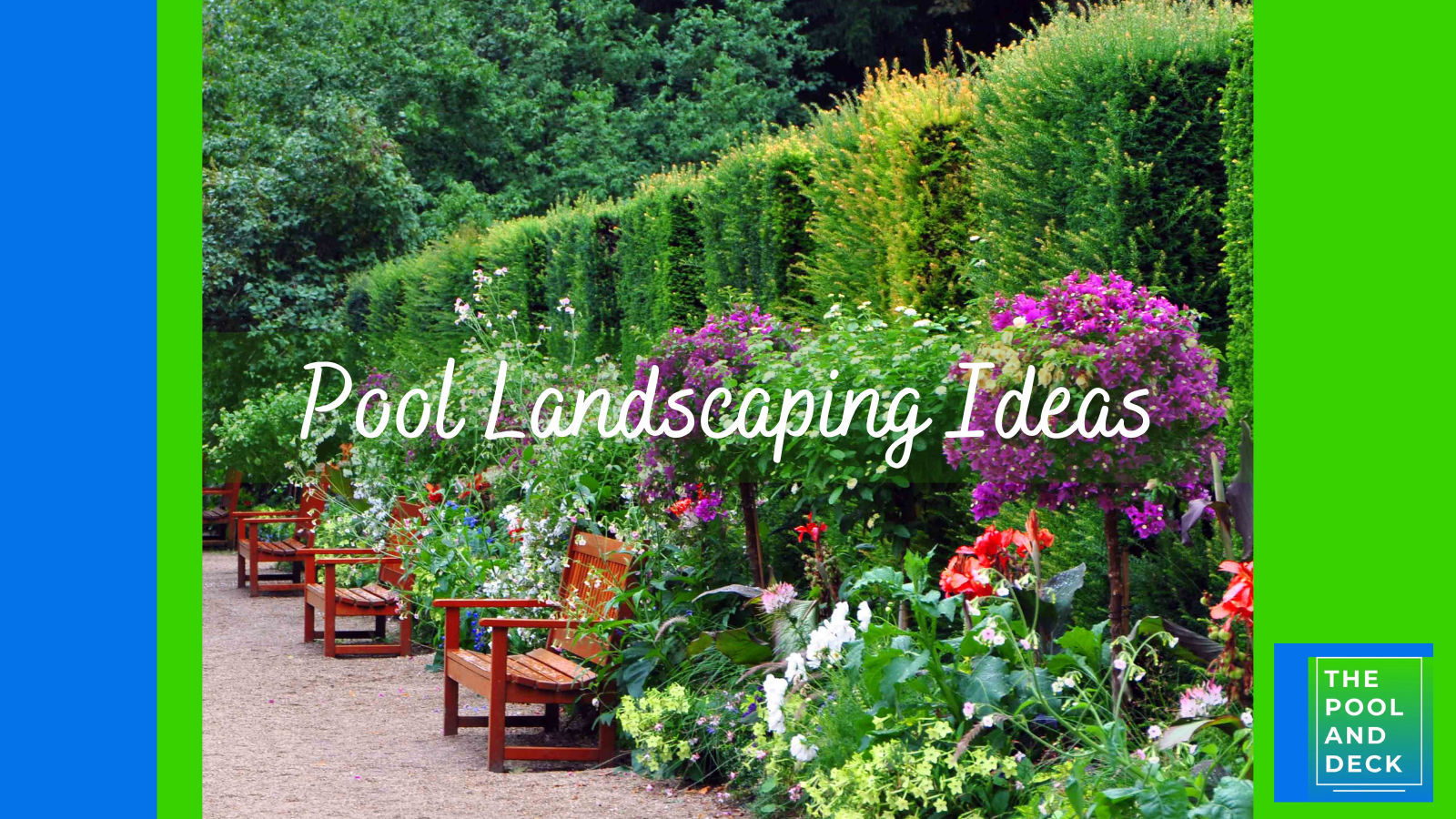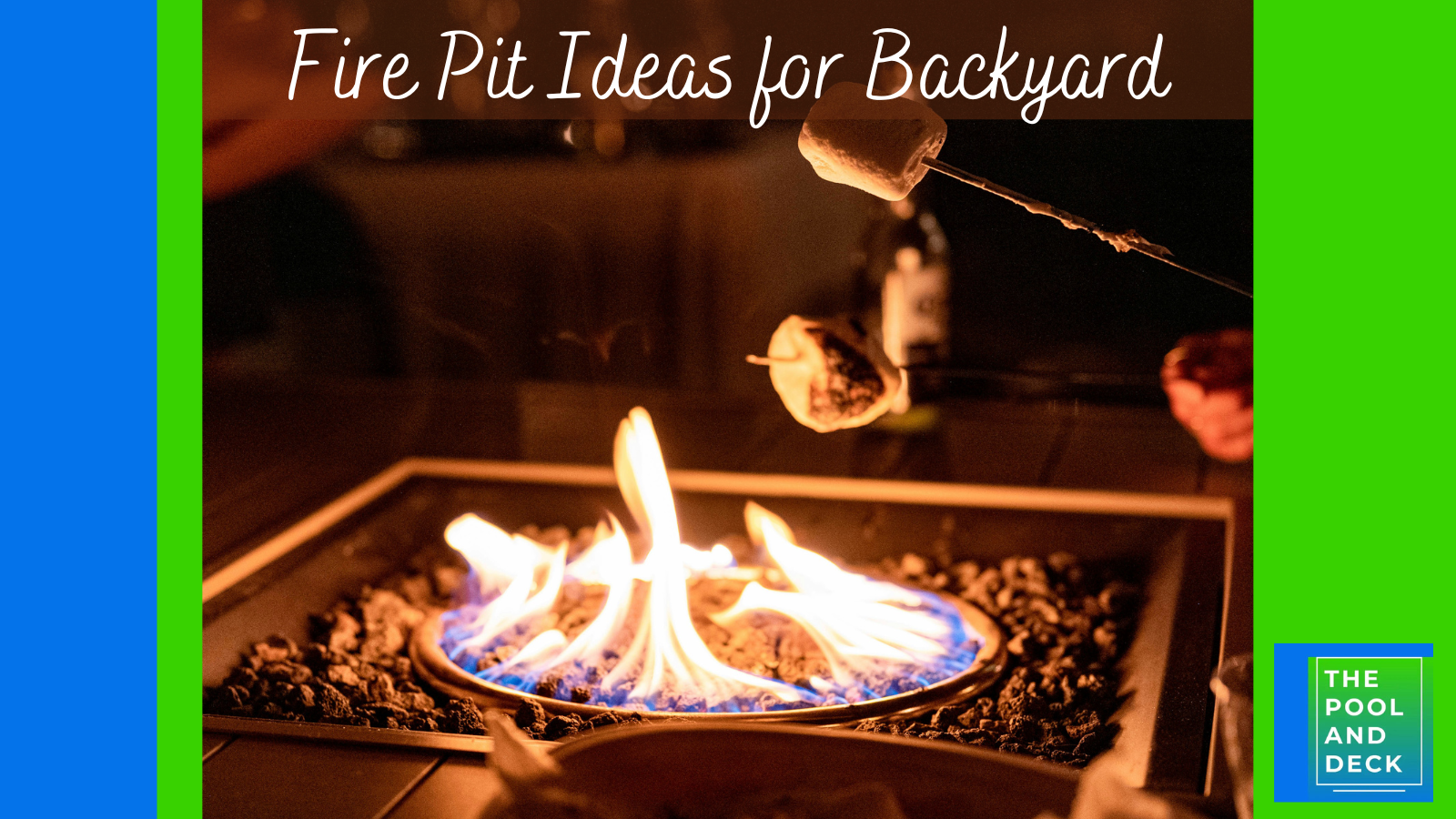Outdoor Planters: The Most Comprehensive Guide!
As an Amazon Associate, I earn from qualifying purchases.
Outdoor planters are one of the most versatile tools in your garden design toolkit for improving the aesthetics of a sprawling backyard, a compact balcony, or a sunny corner of a poolside patio.
From sleek modern planters to rustic wooden planters, the right container can instantly elevate your space while supporting plant health and easy maintenance.
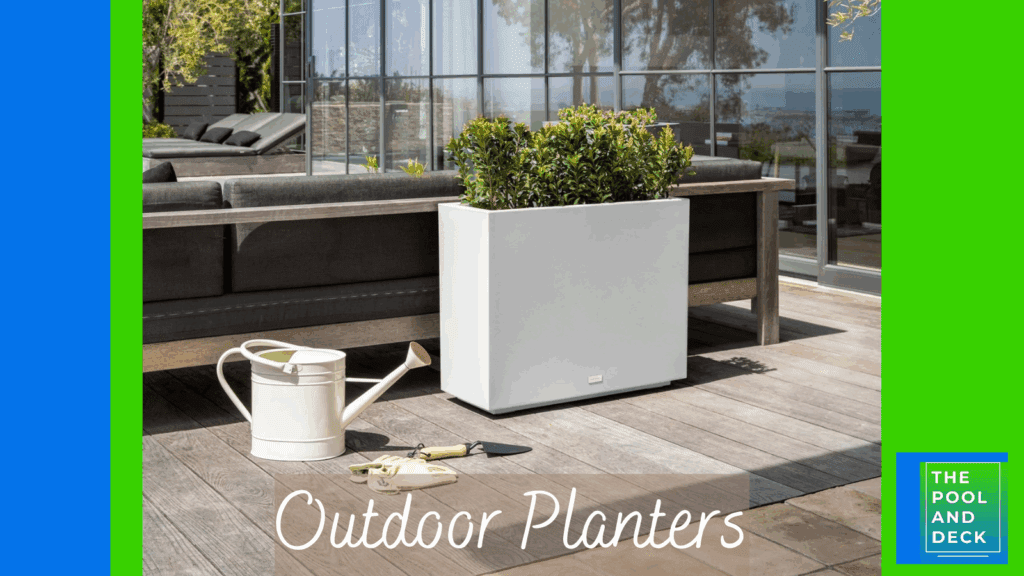
Beyond just holding soil, planters define spaces, create focal points, and allow you to play with height, color, and texture.
With options like raised planter boxes, tall planters, self-watering planters, and even upcycled planters, there’s a style and function for every type of gardener.
In this guide, I shall explore everything you need to know about using patio planters, balcony planters, and decorative planters to transform your outdoor space.
🔑 Key Takeaways:
- Learn how to choose the right material, size, and shape for your outdoor planters.
- Compare planter types: boxes, pots, hanging baskets, and more.
- Get layout ideas for balconies, patios, porches, and poolside spaces.
- Explore seasonal planting tips and best plants for sun, shade, and low-maintenance needs.
- Find creative ideas for DIY planters and upcycled containers.
- Understand key care strategies: watering, fertilizing, and weatherproofing your containers.
- Discover where to buy quality planter boxes, tall planters, and decorative pots—online or locally.
- Use the pre-purchase checklist to find planters that match your climate, style, and purpose.
Table of Contents
Outdoor Planters – Materials
Choosing the right outdoor planters isn’t just about looks—it’s about finding the perfect match between form, function, and your plant’s needs.
Let us take a look at the most common garden planter materials, compare different types like planter boxes, hanging baskets, and flower pots, and help you select the best shapes and sizes for your space.
Ceramic Planters
Classic and decorative, ceramic plant pots are ideal for adding color and style.
- Best Use: Decorative planters for patios, porches, and entryways
- Pros: Stylish, moisture-retentive, available in modern and traditional finishes
- Cons: Fragile, heavy, and may lack proper drainage holes
Terracotta Planters
Terracotta flower pots are breathable and perfect for herbs and Mediterranean-style gardens.
- Best Use: Planters for herbs, succulents, or flowering annuals
- Pros: Natural look, porous for better root health
- Cons: Cracks easily in frost, dries out quickly, and is fragile
Concrete Planters
Bold and durable, concrete planters work best as statement pieces.
- Best Use: Large planters for trees, shrubs, or tall grasses in modern or minimalist gardens
- Pros: Stable, long-lasting, wind-resistant, weatherproof
- Cons: Heavy, expensive, not suitable for balconies or decks
Fiberglass & Resin Planters
Lightweight and versatile, these mimic other materials without the drawbacks.
- Best Use: Great for balcony planters, modern planters, and eco-friendly planters
- Pros: Durable, lightweight, weather-resistant
- Cons: Can look tacky if poorly made, color may fade over time
Plastic Planters
Budget-friendly and flexible, plastic plant pots are ideal for beginners or seasonal use.
- Best Use: Starter containers, temporary displays, self-watering planters
- Pros: Inexpensive, light, comes in endless styles
- Cons: Prone to fading, cracking, and poor insulation for plant roots
Metal Planters
Great for an industrial or contemporary aesthetic.
- Best Use: Modern planters, edgy patios, or mixed-material backyards
- Pros: Sleek look, long-lasting, reusable
- Cons: Conducts heat (bad for root systems), may rust if not protected
Veradek Corten Steel Series Pedestal Planters are terrific for creating a “distressed” look on your patio. The trick is to use them in pairs to frame an entrance, line them up to create a privacy wall or place them on corners to define a space.
Wooden Planters
Natural and warm, wooden planters bring softness to structured outdoor spaces.
- Best Use: Raised planter boxes, DIY planters, rustic decks, and cottage gardens
- Pros: Customizable, good insulation, great for edibles
- Cons: Requires sealing, can rot if untreated, heavier than plastic
Eco-Friendly Planters
Made from recycled materials or biodegradable composites.
- Best Use: Sustainable gardens, urban patios, climate-conscious setups
- Pros: Environmentally responsible, stylish designs available
- Cons: Durability varies by brand; usually pricier
Veradek Block Series – Tall Rectangular Planters are crafted from durable polypropylene and are built to last through any weather. The removable insert bucket makes changing soil a breeze!
Material Comparison Table
| Material | Weight | Durability | Weather Resistance | Style Factor | Best For |
|---|---|---|---|---|---|
| Ceramic | Medium | Moderate | Low (can crack) | High | Decorative accents |
| Terracotta | Light | Low | Low | Classic | Herbs & succulents |
| Concrete | Very Heavy | High | High | Modern Industrial | Anchoring large plants |
| Fiberglass | Light | High | High | Modern | Rooftop or small patios |
| Plastic | Very Light | Low–Medium | Medium | Low | Temporary use |
| Metal | Medium | High | Medium | Contemporary | Urban & minimalist designs |
| Wood | Medium | Medium | Medium | Rustic Natural | Raised beds, gardens |
| Eco-Friendly | Light | Varies | Medium | Sustainable | Eco-conscious homes |
Outdoor Planters – Formats
Each container gardening format serves a different function and style.
Planter Boxes
- Great for lining fences, decks, or windows.
- Ideal for vegetables, herbs, or drought-tolerant plants like lavender.
Plant Pots
- Versatile and available in all sizes and materials.
- Best for showcasing individual plants, including succulent planters and planters for trees.
Hanging Baskets
- Perfect for vertical gardening, balconies, and walls.
- Common for trailing flowers or compact balcony planters.
Format Comparison Table
| Format | Pros | Cons | Best Use Case |
|---|---|---|---|
| Planter Boxes | Large planting space, great for rows | Bulky, less mobile | Lining patios or fences |
| Plant Pots | Flexible placement, size variety | Less soil space per pot | Flowers, shrubs, statement pieces |
| Hanging Baskets | Saves floor space, adds height | Dries out fast, less root space | Small patios, balconies |
Choosing the Right Shape & Size for Your Space
Shape and size matter as much as material. Here’s how they affect function and form:
- Tall Planters: Add elegance and height variation; great for small trees or to flank doorways.
- Low Bowls: Ideal for succulents or cascading plants like ivy.
- Troughs/Rectangular Boxes: Define space edges and work well for herb gardens or narrow patios.
- Round Pots: Softer visual, more traditional, ideal for grouping.
Size tips:
- Go bigger than you think. Large planters hold moisture longer and allow root development.
- Make sure the base fits your space: avoid oversized pots in small walkways.
Size & Shape Comparison Table
| Shape | Best For | Visual Impact | Plant Type Examples |
|---|---|---|---|
| Tall/Narrow | Corners, entrances | Formal, elegant | Boxwoods, mini trees |
| Low & Wide | Coffee tables, centerpieces | Casual, grounded | Succulents, pansies |
| Trough/Box | Fence lines, edges | Structured, clean lines | Herbs, mixed arrangements |
| Round/Square | Groupings or solo statements | Traditional, versatile | Ferns, flowering annuals |
How to Choose the Best Outdoor Planter for Your Needs
Not all outdoor planters are created equal. What looks great in one climate, yard, or space might struggle in another. Choosing the right container means understanding your environment, your plants, and how you want your garden to function.
Here’s how to make smart planter decisions that support both style and plant health.
Climate and Weather Considerations
Your local weather should heavily influence the type of planter you choose.
In hot, dry climates, lightweight plastic or metal pots can overheat quickly, stressing plant roots. In contrast, terracotta planters in cool, damp regions can stay soggy and lead to root rot.
If you live in an area with freezing winters, avoid ceramic or untreated terracotta—these crack easily. Instead, go for fiberglass, resin, or weatherproof concrete planters.
For coastal or humid regions, metal planters should be powder-coated or rust-resistant.
Pro Tip: Always look for weatherproof planters labeled as frost-proof or UV-resistant to increase their lifespan outdoors.
Drainage and Soil Requirements
Drainage is non-negotiable in container gardening. Without it, you risk drowning your plants.
Most high-quality outdoor planters will include pre-drilled drainage holes. If not, you’ll need to drill them.
Pair your planter with the correct soil mix for the planters. Succulent planters need fast-draining cactus soil. Flowering plants benefit from a nutrient-rich potting mix with compost. For raised planter boxes growing edibles, use a blend of topsoil, compost, and perlite or vermiculite for aeration.
Pro Tip: For patios or balconies where runoff is an issue, look for planters with built-in trays or use outdoor plant stands with water catchers.
Matching Planters to Plant Types
The plant itself should help guide your container choice. Here’s how to pair them effectively:
- Planters for herbs like basil, thyme, and parsley work well in small to medium-sized planter boxes with good drainage and plenty of sun.
- Succulent planters should be shallow, well-draining, and ideally made from porous materials like terracotta or ceramic.
- Planters for trees (like dwarf citrus or Japanese maple) need deep, stable containers—large concrete planters or reinforced fiberglass are ideal.
- Flower pots for annual blooms like petunias, geraniums, and marigolds should be light enough to move and wide enough to allow spreading.
- Self-watering planters are great for ferns, tropicals, or any moisture-loving plants where consistent watering is a challenge.
- Drought-tolerant plants, including lavender, rosemary, and sedums, perform best in breathable containers like unglazed clay or wood.
Don’t forget to consider root depth, plant growth habits, and sun exposure when matching your planter to the plant.
Outdoor Planter Design Ideas
A planter is more than a container—it’s a design tool. The right outdoor planters can transform a bland patio into a curated space, a chaotic garden into a layered landscape, or a bare balcony into a lush retreat.
Whether your style leans modern or traditional, here are practical ideas to style your patio planters with confidence and creativity.
Modern vs. Traditional Styles
Your planter style should align with your home’s architecture and your taste.
Modern planters often feature sleek lines, muted colors, and minimalist forms. Think matte black tall planters, concrete cubes, or brushed metal troughs. They work well with structured plantings like boxwoods, agaves, or snake plants, and pair naturally with clean-lined furniture and neutral palettes.
On the other hand, traditional or rustic designs call for softer materials and details—wooden planters, terracotta pots, or aged ceramic flower pots. These complement informal gardens and classic homes. They work beautifully with mixed blooms, herbs, or trailing vines spilling over the sides.
For a transitional look, try combining one modern element (like a concrete planter) with something warm, like wood or glazed ceramic, to create a layered effect.
Color Combinations and Plant Pairings
Your planters are part of your outdoor color scheme. Neutral containers like gray, white, black, or natural wood let the plants do the talking.
However, if your home’s exterior is neutral, a pop of color—like cobalt blue ceramic or deep green resin—can add energy and draw the eye.
Pair your planters and plants based on contrast and balance:
- Use dark planters with light, silvery foliage (like lamb’s ear or dusty miller).
- Pair white or light planters with bold flowering plants (like geraniums, coleus, or zinnias).
- Choose one planter color theme and repeat it in different shapes or heights for cohesion.
If you’re using groups, vary the plant texture: mix upright grasses with low-growing blooms and trailing vines. This keeps your display dynamic.
Creating Focal Points with Large Planters
Large planters are power pieces in garden design. They ground the space and draw the eye. Use them strategically:
- Flank an entryway with matching tall planters and structured evergreens.
- Place one large concrete planter at the end of a path or in a bare patio corner to anchor the layout.
- Use tall planters to add verticality and create privacy on a balcony or urban terrace.
Raised planter boxes can also act as low dividers, gently defining zones without closing them off.
For high-impact planting, layer tall spiky plants in the center (like ornamental grasses or cannas), surround with mid-level blooms, and edge with trailing plants like ivy or sweet potato vine.
Design is about intention. Think of each planter as part of the story you’re telling—whether it’s clean and modern or eclectic and wild.
How to Place Outdoor Planters Like a Pro
Designing with outdoor planters isn’t just about choosing pretty pots—it’s about placing them with intention. A well-placed planter can define a space, guide movement, or bring a dull corner to life.
Whether you’re working with a narrow balcony or a spacious backyard, here are practical layout strategies to make your planters work harder and look better.
Create “Zones” Using Planters
Planters are a subtle but effective way to divide outdoor space into distinct zones. Use them to signal where one function ends and another begins—like separating a dining area from a lounge space or distinguishing the cooking zone from a garden path.
Try rectangular planter boxes or raised planter beds to mark borders. For a soft visual transition, use matching tall planters staggered with flowering pots to break up long sightlines without blocking light or airflow.
This strategy works extremely well on patios, rooftops, or open decks where you want definition without walls or railings.
Anchor Corners and Dead Zones
Every outdoor space has a few awkward corners or blank spots. That’s where a strong planter can come to the rescue. Use a large planter to anchor these dead zones—preferably one with vertical lift, like a tall planter filled with bamboo, ornamental grasses, or a dwarf tree.
For example, in the corner where a fence meets the wall, a single concrete planter with a sculptural plant can visually complete the space. If space allows, create a trio using tall, medium, and small planters in complementary colors or materials.
On smaller patios or balconies, even a single well-placed flower pot can give shape to a space that otherwise feels empty.
Layer Heights and Textures
Think of your planter layout the same way you would stage a photo: foreground, mid-ground, and background.
Mixing heights adds depth and movement to your space. Use tall planters in the back or corners, medium-height planters at the center, and low or bowl-shaped containers up front.
This is especially effective when grouping planters—just make sure the plant heights vary too. Pair spiky plants with round ones, flowering plants with foliage, and upright forms with trailing varieties.
Visual layering is the key to making a container garden feel lush and professionally designed.
Guide the Eye
Planters are natural tools for directing attention. Use symmetry to frame doorways, stairs, or garden beds. Line walkways with evenly spaced pots to lead the eye along a path.
On a patio or deck, use large planters to “point” toward focal features like a fountain, sculpture, or seating area.
Repetition is a designer’s secret weapon. Matching planters spaced rhythmically along a railing or garden edge instantly creates cohesion and flow—even if the plants inside are all different.
If your space feels disorganized, start with three identical planters and space them evenly. The effect is clean, modern, and grounding.
Keep Flow in Mind
Even the most beautiful planter can become a problem if it blocks movement. Think about how people will walk through your space and place planters where they won’t interfere.
Leave enough room for chairs to slide out, doors to open, and people to pass without dodging pots.
On small patios, stick to edges and corners. For narrow balconies, choose wall-mounted or hanging baskets to preserve floor space.
Designing with outdoor planters is as much about what you leave out as what you put in. Open space is part of the layout—it allows your planters and plants to breathe, and your design to feel deliberate rather than cluttered.
DIY and Upcycled Outdoor Planter Projects
Store-bought planters can be beautiful, but building or customizing your own opens up creative possibilities, saves money, and adds personality to your outdoor space.
Whether you’re a seasoned DIYer or just dipping your toe into weekend projects, making your own outdoor planters can be surprisingly simple and satisfying.
Here’s how to do it.
Step-by-Step Guide to Making Your Own Planter
One of the easiest ways to start is with a basic raised planter box made from wood. It’s functional, scalable, and works on patios, balconies, and backyards.
What you’ll need:
- Cedar, redwood, or treated pine boards
- Galvanized screws or nails
- Drill or hammer
- Landscape fabric (for lining)
- Optional: caster wheels, handles, stain, or sealant
Instructions:
- Measure and cut your wood to size. A standard beginner-friendly box might be 36″ long, 12″ high, and 18″ deep.
- Assemble the frame using screws or nails—build the box base first, then attach the sides.
- Line the inside with landscape fabric for better drainage and to hold soil in place.
- Drill drainage holes in the bottom if it’s fully enclosed.
- Seal or stain the wood for weather protection (optional but recommended).
- Fill with soil mix for planters suited to your intended plants.
Once built, this DIY planter is ideal for herbs, leafy greens, or even small flowers. Add caster wheels for easy mobility on a patio or deck.
Creative Ideas Using Recycled Materials
Repurposed items can make standout upcycled planters that bring charm and sustainability to your space. You’d be surprised what you can grow in with a little imagination.
Try these:
- Old drawers or crates: Line with plastic and add drainage holes for rustic wooden planters.
- Metal buckets or basins: Great for an industrial look—just be sure to drill holes and add gravel.
- Rain boots or shoes: Funky and fun for container gardening on balconies.
- Tires: Paint and stack for colorful raised beds (especially good for drought-tolerant plants).
- Wine boxes, toolboxes, or baskets: With liners, these make excellent eco-friendly planters for herbs or flowers.
When using non-traditional materials, always ensure you’ve added proper drainage holes and avoided any toxic coatings or treatments.
Tips for Painting and Customizing Planters
Don’t underestimate the power of paint and texture. You can turn an ordinary pot into a standout decorative planter with just a few easy upgrades.
- Use outdoor-safe spray paint to refresh plastic, metal, or ceramic pots—matte black, terracotta red, and stone gray are always in style.
- Add stencils, geometric patterns, or hand-painted designs for a unique look.
- Apply wood stain to raised planter boxes for a polished, rich finish that enhances the grain.
- Use chalk paint and labels to mark your planters for herbs—great for kitchens or entertaining areas.
When customizing planters, make sure any paint, sealant, or stain you use is weatherproof and rated for outdoor use. This not only preserves the look but also protects your plants from toxins and your containers from damage.
DIY and upcycled planter projects are perfect for personalizing your space, working within a budget, or adding a creative element that store-bought options can’t replicate.
Some Simple Layout Examples
Once you’ve chosen your outdoor planters, it’s time to put them to work. A smart layout can turn even the smallest space into a curated, functional retreat.
Whether you’re outfitting a tight urban balcony or styling around a pool, these simple layout ideas will help you use planter boxes, flower pots, tall planters, and more to create impact without clutter.
Compact Balcony
Space is tight, so go vertical and keep the floor clear wherever possible. Use wall-mounted planters or hanging baskets for herbs or trailing flowers.
A slim raised planter box along one edge provides growing space without taking up walking room. Add a small succulent planter or decorative pot on a side table for a simple focal point.
Pro Tip: Stick to a single color or material theme—like matte black fiberglass—to unify a small area.
Layout formula:
- Hanging basket (vertical height)
- One slim planter box (edge definition)
- One small flower pot or bowl on a side table (focal point)
Small Porch
A small front or back porch benefits from symmetry and elevation. Flank the steps or door with matching tall planters—perfect for dwarf evergreens or flowering annuals.
Use wooden planters on each side for a welcoming, homey look. If space allows, tuck a small outdoor plant stand beside the seating area for a layered touch.
Layout formula:
- 2 tall planters framing the entrance
- 1–2 low planters near the seating area
- An optional plant stand with tiered small pots
Medium-Sized Patio or Deck
Here you can start creating zones. Use large planters or planter boxes to divide seating and dining areas.
Group planters in threes to layer height and texture—tall grasses, mid-sized flowers, and trailing vines. Create a central anchor with a striking concrete planter filled with seasonal color.
Layout formula:
- One large planter as a focal point
- 2–3 grouped planters near furniture
- 1 rectangular box to define a space edge
Large Poolside or Courtyard
With space to stretch, you can use planters to frame walkways, accent focal features, and build privacy. Try a row of weatherproof planters or raised planter boxes along fences or walls.
Near the pool, use tall planters with architectural plants like bamboo or palms. Place large flower pots or modern planters at key corners to visually ground the space.
Layout formula:
- 2–4 tall or large planters for corner anchors
- Repeating planters along one or two edges
- Low bowls or rectangular boxes near walkways or lounge chairs
Pro Tip: Use negative space intentionally, especially in larger areas. Not every square foot needs a planter.
Best Plants for Outdoor Planters
Choosing the right plants is just as important as picking the right containers. Whether you’re going for beauty, utility, or low-maintenance ease, your outdoor planters will thrive with plants suited to your light conditions, planter size, and care habits.
Here are some of the best plants for planters—broken down by sunlight needs, maintenance level, and seasonal appeal.
Top Picks for Sun and Shade
Full Sun Favorites:
- Lavender – Fragrant, drought-tolerant, and perfect for wooden planters or raised boxes
- Petunias – Bright, colorful, and ideal for hanging baskets
- Sedum – A go-to for succulent planters; loves heat and dry conditions
- Thyme & rosemary – Great in planters for herbs, and thrive in sun-drenched spots
Pro Tip: Group sun-loving plants together in the same patio planters to simplify watering and placement.
Shade Lovers:
- Ferns – Thrive in deep flower pots or self-watering planters in covered patios
- Hostas – Lush and leafy, perfect for planter boxes on shady porches
- Impatiens – Bright blooms for low-light areas, ideal for smaller containers
- Heuchera (Coral Bells) – Adds color and texture under partial shade
Pro Tip: Shade plants can thrive under overhangs, behind structures, or on the north side of buildings.
Low-Maintenance and Drought-Tolerant Options
If you’re aiming for easy plant care, go for varieties that don’t need constant watering or trimming.
Best drought-tolerant plants for outdoor planters:
- Succulents (Echeveria, Sempervivum, Crassula) – Thrive in shallow bowls or ceramic pots
- Ornamental grasses (Blue fescue, Carex) – Pair well with modern planters
- Geraniums – Colorful and forgiving in most climates
- Portulaca (Moss Rose) – Heat-hardy and trail beautifully over planter edges
Pair these with soil mix for planters that drain well and consider using self-watering planters to reduce upkeep even further.
Seasonal Planting Ideas (Spring, Summer, Fall, Winter)
Rotating your plants seasonally keeps your containers fresh and in sync with your landscape.
Spring:
- Tulips, daffodils, pansies, snapdragons
- Use in decorative planters near entrances or window boxes
Summer:
- Geraniums, zinnias, marigolds, basil, mint
- Combine herbs and blooms in planters for herbs or large mixed containers
Fall:
- Mums, ornamental kale, asters, trailing ivy
- Look great in wooden planters or low bowls with warm-tone finishes
Winter:
- Evergreen boughs, pinecones, dogwood branches, boxwood
- Use in concrete planters or tall weatherproof pots to withstand the elements
Planning your outdoor plantings by season adds movement and variety to your space throughout the year.
Outdoor Planters: Care and Maintenance
Great design only goes so far—keeping your outdoor planters in top shape takes a bit of ongoing care.
Whether you’re working with large planters, hanging baskets, or raised planter boxes, routine maintenance ensures your containers last longer and your plants stay healthy.
Here’s how to make it easy.
Watering Tips for Healthy Plants
Watering is the most common source of both success and failure in container gardening. Too much or too little can stress or kill even the hardiest plant.
Smart watering habits:
- Check moisture by sticking your finger 2 inches into the soil—if it’s dry, it’s time to water.
- Water deeply but less frequently to encourage strong root growth.
- Use self-watering planters for thirsty plants or if you’re forgetful.
- Group plants with similar watering needs together in the same pot or planter box.
Pro Tip: Containers dry out faster than garden beds, especially tall planters or those in full sun. In hot weather, check daily—especially for smaller or porous containers like terracotta planters.
Fertilizing and Soil Renewal
Planters don’t have access to the nutrient cycle of natural soil, so you’ll need to supplement.
Best practices:
- Use a balanced, slow-release fertilizer when planting.
- Refresh the soil mix for planters at the beginning of each season or when switching plant types.
- For planters for herbs or edibles, choose organic fertilizers and compost.
Over time, compacted or depleted soil won’t support growth. Add fresh compost or potting mix mid-season if plants seem sluggish.
Protecting Planters in Extreme Weather
Outdoor containers are exposed to all the elements. A few preventive steps can protect your investment.
In winter:
- Move fragile ceramic or terracotta pots indoors or under cover to avoid cracking.
- Elevate concrete planters or wooden planters off the ground with pot feet to prevent moisture buildup.
- Wrap planters with burlap or insulating fabric in very cold climates.
In summer:
- Avoid dark-colored planters in full sun—these can overheat and dry out roots.
- Use mulch to help retain moisture and moderate soil temperature.
Where to Buy Outdoor Planters
When it comes to sourcing the right outdoor planters for your space, your options are broader than ever.
From boutique garden centers to major online retailers, you can find everything from eco-friendly planters to oversized concrete planters—if you know what to look for.
Here’s how to shop smart, whether you’re browsing in person or filling your cart online.
Local Garden Centers vs. Online Stores
Garden centers and nurseries offer a hands-on shopping experience. You can see the planter’s size, finish, and color in natural light, and often get real-time advice from staff on what works best for your climate, soil mix, or planting goals.
Pros of shopping local:
- Immediate availability—no shipping delays
- Easier to assess material quality and drainage features
- Can coordinate plant and planter purchases in one trip
Online stores, on the other hand, offer a huge variety and often better pricing. You’ll find everything from self-watering planters, tall planters, and modern planters to bulk deals on planter boxes and flower pots.
Top online sources to explore:
- Wayfair, West Elm, and Pottery Barn for stylish decorative planters
- Gardener’s Supply Co. for functional and weatherproof planters
- Etsy for handcrafted DIY planters and unique upcycled planters
- Home Depot and Lowe’s for practical, affordable basics with quick shipping
- Amazon is a great resource for shopping oline for outdoor planters, especially if you have Amazon Prime.
Just be sure to check product specs carefully—especially dimensions, materials, and whether drainage holes are included.
What to Look for When Shopping
Regardless of where you buy, there are a few features to check off your list.
Key criteria:
- Drainage holes (or the ability to add them)
- UV and frost resistance for all-season durability
- Accurate sizing that matches your space and plant needs
- Weight and stability—especially for tall or top-heavy plants
- Material that fits your climate (lightweight resin for rooftops, solid concrete for windy zones)
Also consider the planter’s base—flat-bottomed pots may trap water on wood decks, while raised bases or feet allow airflow and drainage.
Budget-Friendly Options
You don’t have to spend a fortune to get quality planters. Keep an eye out for:
- End-of-season sales at garden centers
- Clearance sections in big box stores
- Bulk bundles of plastic or resin plant pots
- Second-hand finds on Facebook Marketplace or local classifieds
- DIY planter kits from hardware stores or Etsy
If you’re shopping for a full patio setup, mix premium statement pieces with budget-friendly fill-ins. Splurge on one or two large, eye-catching planters for trees or flowers, then round out the space with simple balcony planters or raised planter boxes.
What to Consider Before You Buy Outdoor Planters?
With so many styles, materials, and sizes of outdoor planters available, it’s easy to get overwhelmed.
This quick checklist will help you make the right call. Before you hit “buy” or load up your cart at the garden center, run through these essential questions:
1. How much sun does the area get?
Sun exposure determines which plants will thrive and what materials will last.
- Full sun: Choose UV-resistant weatherproof planters and heat-tolerant plants.
- Partial or full shade: Focus on ferns, hostas, impatiens, and planters for shade plants.
2. What size is your space?
Don’t overwhelm a small balcony with oversized large planters, and don’t scatter tiny pots across a big courtyard.
- Balcony planters and vertical planters work best in tight spots.
- Use planter boxes or raised beds to define larger zones on patios or decks.
- Measure floor space and door clearances before buying anything heavy or wide.
3. Is this planter decorative, functional, or both?
Are you planting to grow food, add color, define space, or all three?
- For planters for herbs, choose shallow, accessible containers.
- For seasonal curb appeal, go bold with decorative planters or color-glazed ceramics.
- Choose tall planters or rectangular boxes with upright plants or grasses for screening and privacy.
4. Do you need something lightweight or permanent?
The answer affects your material choice:
- For rooftops, decks, or renters: look for fiberglass, resin, or eco-friendly planters that are light and portable.
- For wind-prone yards or long-term setups, go with concrete planters or anchored wood boxes.
Also consider mobility—adding caster wheels or placing pots on a rolling base can make maintenance easier.
5. What look are you going for?
Define your style before you shop:
- Modern planters: Sleek lines, matte finishes, neutral tones
- Rustic: Wooden planters, distressed finishes, natural textures
- Eclectic: Bright colors, mixed materials, and creative DIY planters
- Traditional: Symmetry, flower pots, and terracotta
Pro Tip: Pick 2–3 materials or tones and repeat them throughout the space for visual consistency.
6. Will you be changing plants seasonally?
If you like rotating plants each season—spring bulbs, summer blooms, fall mums, and winter greens—make that part of your plan.
- Use inserts or liner pots to make swaps easy.
- Choose soil mix for planters that supports fast turnover and diverse plant needs.
- Group containers by access so it’s easier to reach and replant as needed.
Check out my earlier post, 11 Must-Have Patio Planters for The 2025 Season!
Frequently Asked Questions About Outdoor Planters
Do all outdoor planters need drainage holes?
Yes—drainage holes are essential. Without them, excess water collects at the bottom, leading to root rot. If your planter doesn’t come with holes, you can usually drill them.
Can I leave planters outside all winter?
It depends on the material. Concrete planters, fiberglass, and certain weatherproof planters can stay out year-round.
Terracotta and ceramic pots are more vulnerable to cracking in freezing temps. Either move them inside or raise them on pot feet and insulate with burlap or covers.
What’s the best soil mix for planters?
Use a high-quality potting mix designed for containers—light, well-draining, and rich in nutrients. For succulent planters, use cactus soil. For edibles, consider mixing compost with perlite or vermiculite in raised planter boxes.
How often should I water my planters?
Depends on the climate, plant type, and pot size. In hot weather, smaller flower pots or hanging baskets may need daily watering. Use the finger test: if the top 1–2 inches of soil are dry, it’s time to water.
Can I use large planters for trees?
Yes. Planters for trees should be deep, wide, and heavy enough to support the root system and resist tipping. Concrete, wood, or large fiberglass planters are best.
What are some good plants for beginners?
Start with drought-tolerant plants like lavender, rosemary, sedum, and succulents. These are forgiving and thrive in containers. Herbs, geraniums, and ornamental grasses also do well with basic care.
Are self-watering planters worth it?
Yes—for busy gardeners or hot climates, self-watering planters reduce watering frequency and help maintain consistent moisture levels, especially for tropical or moisture-loving plants.
To Sum Up
Outdoor planters are versatile tools that enhance any space, from balconies to patios.
This guide has covered all you need to know about outdoor planters, from choosing the right planters, matching them with plants, and creative DIY and layout ideas.
